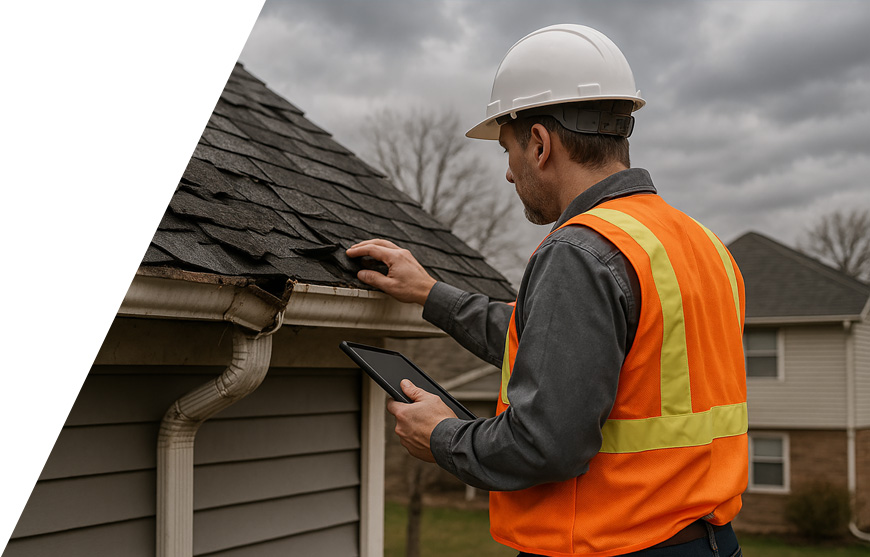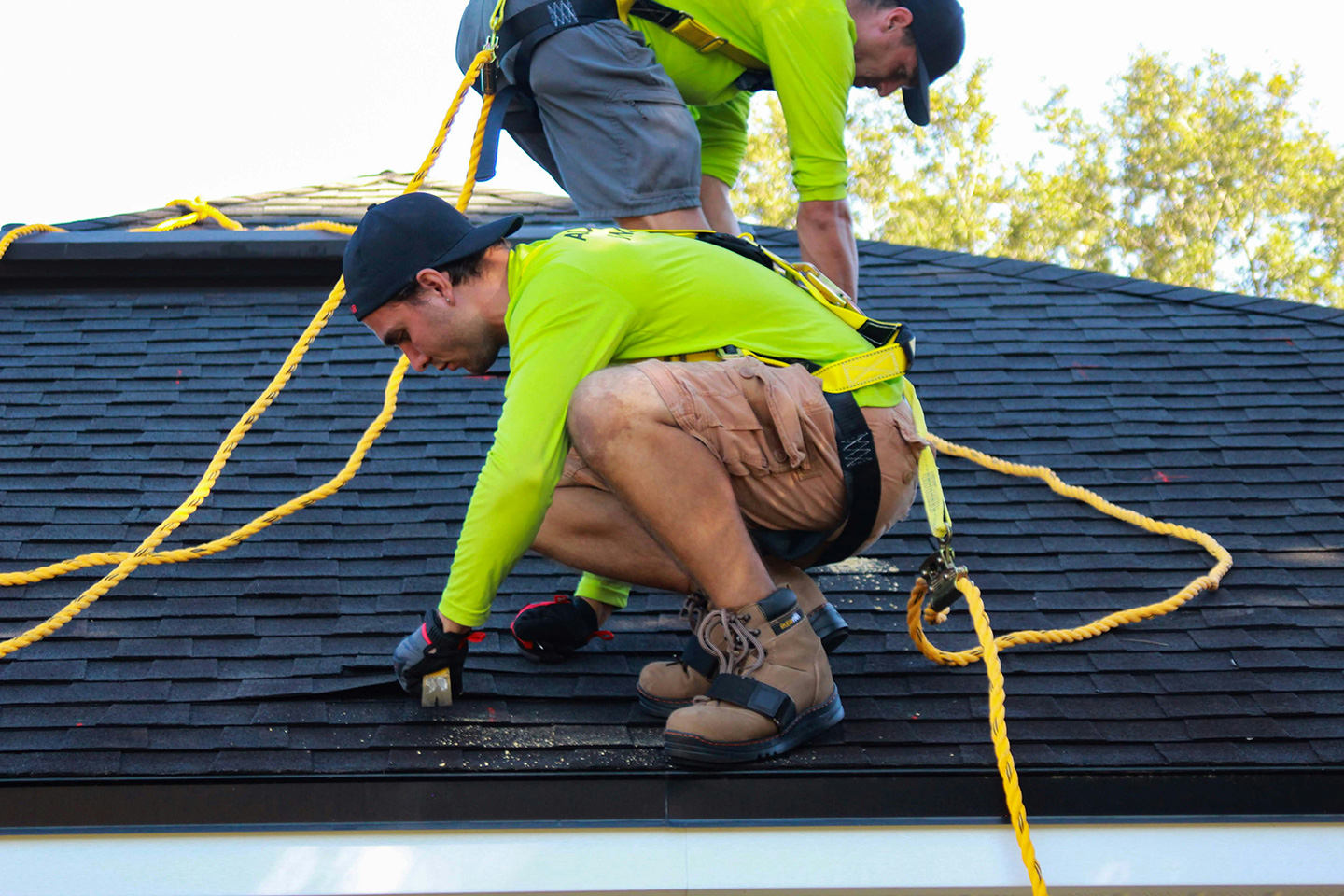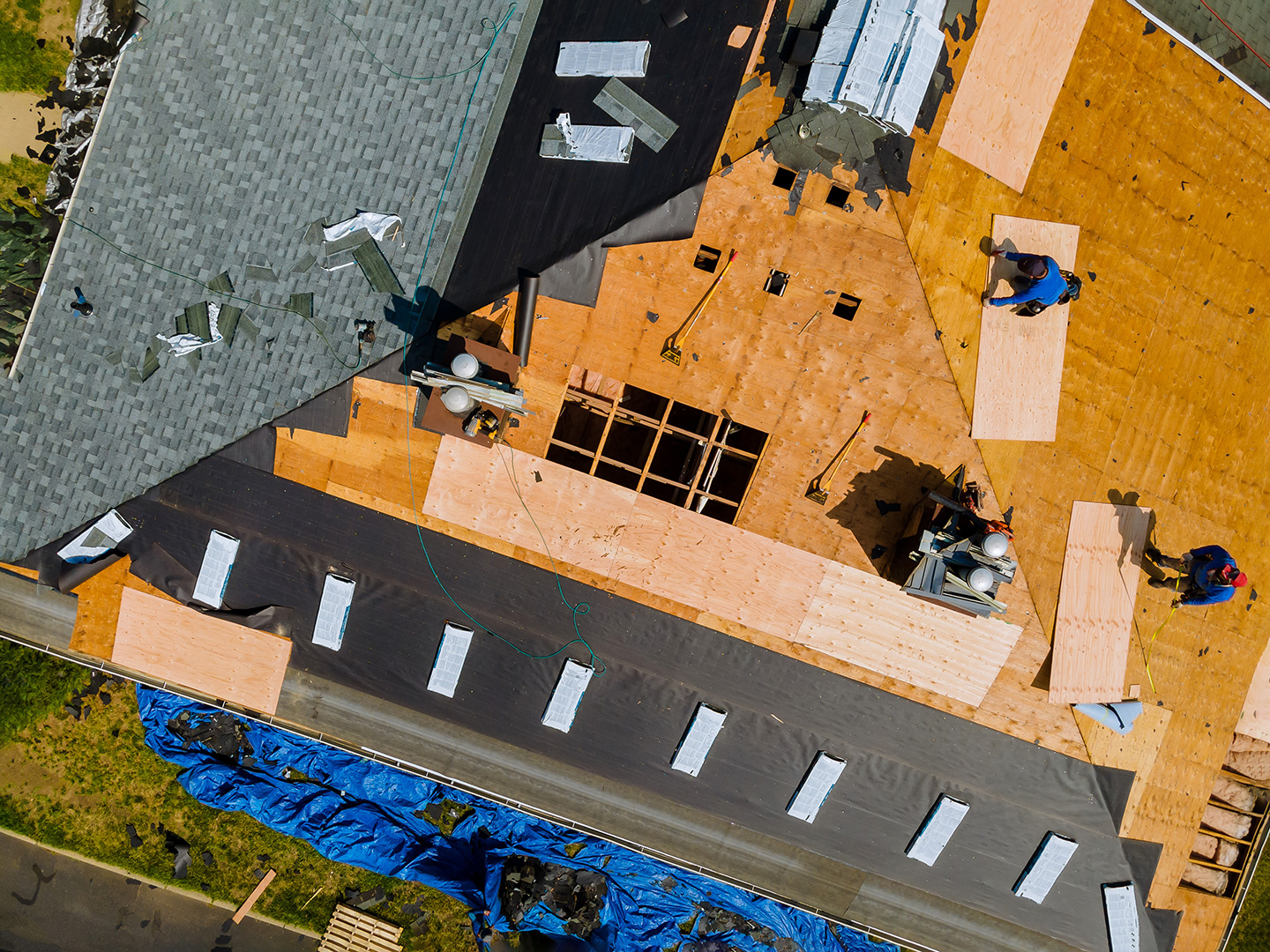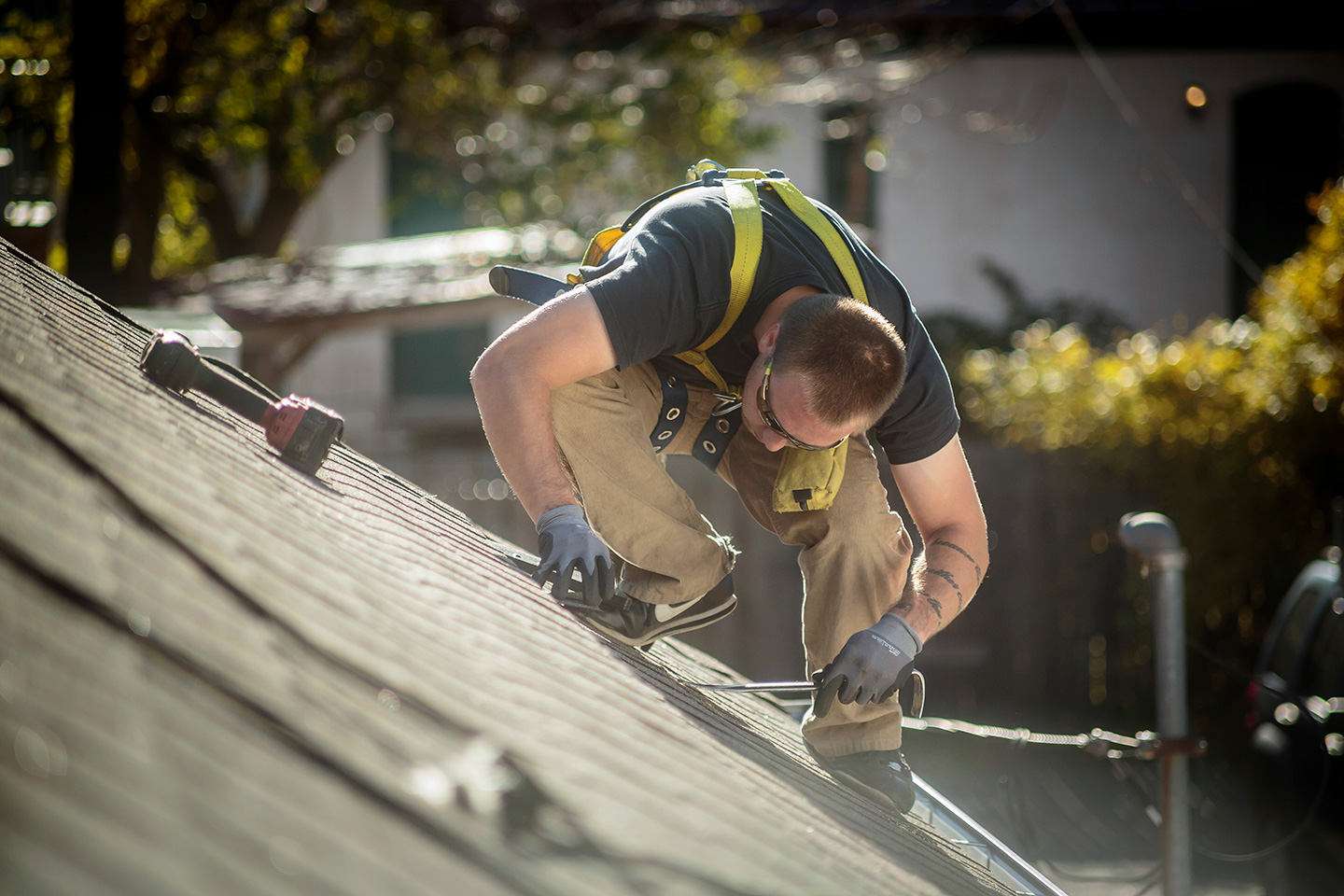All Blogs

Lead Generation for Roofers: How to Fill Your Pipeline
Finding quality roofing leads is the foundation of every successful roofing business. With over 99,000 roofing companies competing for homeowner attention across North America, effective lead generation for roofing separates thriving businesses from those struggling to fill their pipeline. This guide explores proven multi-channel strategies that combine traditional marketing with modern technology to attract, convert, and manage leads at scale. Whether you’re wondering if buying roofing leads works, how much roofing companies typically pay for leads, or seeking actionable strategies to generate leads organically, this comprehensive breakdown of lead generation for roofers provides the roadmap to sustainable growth. Lead Generation Strategy Overview Channel Avg Cost Per Lead Conversion Rate Best For Implementation Difficulty SEO/Content Marketing $25-$50 15-25% Long-term growth High Google Ads $50-$150 8-15% Immediate results Medium Facebook Ads $100-$200 5-12% Brand awareness Medium Direct Mail $30-$80 12-20% Local targeting Low Referrals $0-$25 25-40% Quality leads Medium Lead Services $50-$300 5-20% Quick scaling Low The Multi-Channel Lead Generation Framework Search Engine Optimization (SEO) SEO remains the most sustainable channel for generating leads among roofing contractors. Homeowners searching for “roofing contractors near me” or “roof repair [city]” represent high-intent prospects actively seeking services¹. Essential SEO strategies include: Creating location-specific service pages

How to Get Roofing Leads from Insurance Companies
When a major storm or natural disaster happens in your service area, massive storm damage will occur in people’s homes, and they will contact their insurance agent to file an insurance claim. The insurance agent will dispatch an adjuster who will arrive with a roofing professional and assess the damage.

Asset Management in Field Service: Explained
Every field service job depends on having the right assets in the right place at the right time, whether it’s specialized HVAC diagnostic tools, roofing safety equipment, plumbing inspection cameras, or electrical testing devices. Successful service delivery hinges on effective asset management. In this guide to asset management in field service, we’ll examine how asset management works across service industries, why fragmented systems create costly inefficiencies, and how unified platforms can transform your field operations. What you’ll discover: Why asset management challenges vary across service industries How unplanned downtime costs companies up to $260,000 per hour1 The critical differences between customer-owned and company-owned asset tracking How all-in-one platforms eliminate asset management chaos Asset Management Challenges Across Service Industries Field service companies face unique asset management challenges that vary significantly across industries. Understanding these differences is crucial for implementing effective solutions. Industry Primary Assets Key Challenges Average Downtime Cost HVAC Diagnostic tools, refrigerant equipment, and HVAC units Temperature-sensitive parts, seasonal demand spikes $125,000/hour2 Roofing Safety equipment, material hoists, and inspection tools Weather-dependent work, high-value materials $85,000/hour3 Plumbing Pipe inspection cameras, leak detectors, specialty tools Emergency response requirements, sanitation concerns $95,000/hour4 Electrical Testing equipment, meters, safety gear Safety compliance, precision instruments $110,000/hour5

Best Accounting Software for Roofing Companies 2026
In October 2025, our research team analyzed 47 accounting solutions specifically designed for roofing contractors and field service businesses. We evaluated these platforms using the following weighted comparison factors: Integration Abilities (25%) – How well the software connects with existing business tools and systems Average Customer Ratings (20%) – Real user satisfaction scores across multiple review platforms Roofing-Specific Features (20%) – Job costing, project management, and industry-specific tools Financial Management Capabilities (15%) – Invoicing, payment processing, and financial reporting Ease of Use (10%) – User interface design and learning curve for roofing teams Mobile Functionality (10%) – Field access and mobile workforce management Based on our algorithm, we rank-ordered platforms by their overall performance across these categories. The table below presents the top accounting software options for roofing companies, along with detailed reviews for each entry. The Best Accounting Software for Roofing Companies in 2026 Platform Integration Abilities Avg. Customer Ratings Roofing-Specific Features Financial Management Mobile Functionality Specialty 1 Zuper Excellent 4.5/5.0 Excellent Excellent Excellent All-in-one roofing management platform 2 QuickBooks Online Excellent 4.4/5.0 Fair Excellent Good General accounting 3 AccuLynx Good 4.4/5.0 Excellent Good Good Roofing operations 4 Sage 100 Contractor Good 4.2/5.0 Good Excellent Fair Construction accounting 5

Roofing Industry Trends 2026
The roofing industry is undergoing an unprecedented transformation as it enters 2026. From AI-powered field management to sustainable materials that meet evolving climate challenges, roofing contractors face both opportunities and operational complexities that require strategic adaptation. Whether you’re managing growing project volumes, navigating labor shortages, or meeting increasing demands for energy-efficient solutions, understanding these trends will determine your competitive position in a rapidly evolving market. Here are the key roofing industry trends for 2026: Market expansion driven by aging infrastructure and climate demands Technology integration is revolutionizing operations and customer experience Sustainability requirements becoming standard, not optional Labor solutions based on increased automation and enhanced training programs Advanced materials offering superior performance and longevity Roofing Industry Trends for 2026 Roofing Market Growth Accelerates Despite Challenges The global roofing market is projected to reach USD 130 billion by 2033, growing at a CAGR of 3.3% from 2026¹. This growth reflects several converging factors: aging housing stock built during the 2000s boom reaching replacement cycles, increased storm frequency requiring repairs, and new construction demands. Roofing Industry Market Trends for 2026 Market Segment 2026 Value Growth Rate Key Drivers Global Roofing Market $132.5 billion 3.3% CAGR Aging Commercial Roofing Materials $14.2 billion 6.1%

Service Scheduling Software to Streamline Your Business Operations
Running a service-based business can be challenging, especially when managing appointments, coordinating staff, and keeping customers satisfied.

Overview of Scheduling Software and Tools for Your Business
The scheduling software market is projected to reach $5.12 billion by 2025¹, with service businesses demanding platforms that streamline operations, reduce costs, and enhance customer satisfaction. Companies implementing modern scheduling solutions report 35% more completed jobs daily², while cutting operational waste by thousands of dollars annually. This comprehensive guide compares the leading scheduling software and tools for roofing, HVAC, electrical, and plumbing businesses, analyzing features, pricing, and real-world performance to help you select the optimal solution for your operations. Software Ranking Methodology Our comparison evaluates scheduling software based on five critical factors that determine long-term success for service businesses: Adaptability & Customization: How well platforms accommodate diverse business workflows without forcing process changes. Configurable systems score higher than rigid, one-size-fits-all solutions. Intelligence & Automation: AI-powered features that reduce manual work, optimize routes, and learn from operational patterns. Platforms with advanced automation capabilities rank above basic scheduling tools. Integration Ecosystem: Number and quality of connections to existing business systems. Comprehensive integration prevents data silos and operational friction. Mobile Excellence: Offline functionality, intuitive interfaces, and field-optimized features that keep technicians productive regardless of connectivity. Scalability & Growth Support: Ability to evolve with expanding operations from small teams to enterprise-scale businesses without requiring

Using AI to Improve Customer Service
Customer service challenges are mounting pressure on service businesses everywhere. From labor shortages and technician retention issues to rising cost pressures and evolving customer expectations, traditional approaches aren’t keeping pace. Artificial intelligence (AI) offers a proven path forward, enabling businesses to deliver exceptional service experiences while reducing operational strain and driving measurable growth. This guide reveals how to use AI to improve customer service operations in the service industry. It also provides a timeline for measurable business and customer satisfaction improvements after implementation, the specific metrics that improve after implementation, and practical strategies for leveraging configurable solutions to accelerate AI adoption and see a faster ROI. What you’ll discover: Core AI capabilities that directly impact customer satisfaction metrics Timeline for measurable improvements after AI implementation How configurable platforms like Zuper accelerate AI adoption How to Use AI to Improve Customer Service AI Capability Customer Impact Business Outcome Implementation Time Automated Responders 24/7 customer communication and request handling Significantly faster response times, improved satisfaction 3-4 weeks Call Summaries Structured decision capture from client conversations Time savings on decisions and follow-ups 2 weeks Voice Notes Real-time job updates with accurate transcription Faster documentation, fewer errors 1-2 weeks Job Summaries Comprehensive project recaps

AI Impact in Call Centers: 2025 Report
The integration of artificial intelligence in call centers has moved from experimental to essential. Forward-thinking service businesses are discovering that AI implementation delivers measurable improvements in operational efficiency, cost reduction, and customer satisfaction—often within 3-6 months of deployment. This comprehensive analysis examines the AI impact in call centers, including: Quantified impact of AI on call center operations and costs Customer satisfaction metrics that improve with AI integration How intelligent platforms streamline multi-level communications Why configurable AI solutions outperform rigid legacy systems Primary Impact Areas of Using AI in Call Centers Impact Area Improvement Range Implementation Time Cost Impact Call Resolution Speed 35-60% faster 2-4 weeks 25-40% cost reduction Agent Productivity 40-65% increase 4-8 weeks 30-50% efficiency gain Customer Wait Time 45-70% reduction 1-3 weeks 20-35% operational savings First-Call Resolution 25-45% improvement 6-12 weeks 15-30% cost decrease After-Hours Coverage 80-95% automation 2-6 weeks 50-75% labor savings AI Impact on Call Centers: Operational Efficiency Gains Through AI Integration Intelligent Call Routing and Prioritization AI-powered routing systems analyze caller intent, history, and urgency to connect customers with the most qualified agents. This eliminates the frustrating experience of multiple transfers while reducing average handle time by 35-50%. Project-based businesses particularly benefit from AI’s ability

AI in Customer Service Statistics
Customer service is experiencing a revolution driven by artificial intelligence (AI), and the statistics prove it’s no longer a question of “if” but “when” your business will need to adapt. Forward-thinking project-based service organizations are already leveraging AI to tackle labor shortages, improve technician retention, and meet evolving customer expectations while maintaining cost efficiency. This guide dives into the key AI in customer service statistics, showing the impact artificial intelligence can have on the service industry. AI in Customer Service Statistics and Impact Metrics Metric Current Performance AI-Enhanced Performance Improvement Average Response Time 24-48 hours 2-4 hours 85% faster First-Call Resolution 68% 87% 28% increase Customer Satisfaction 72% 89% 24% improvement Agent Productivity Baseline 35% increase +35% output Operational Costs Baseline 25% reduction -25% costs Customer Retention 78% 92% 18% improvement Service Quality Consistency 65% 91% 40% more consistent Project Completion Accuracy 82% 96% 17% improvement Industry Adoption Rates Show Rapid AI Integration The service industry’s AI adoption has accelerated dramatically. According to Salesforce’s State of Service report, 83% of service organizations now use AI in some capacity, up from 56% in 2022. This represents a 48% increase in just three years. Project-based service businesses are leading this charge. Research

Best Roofing CRM 2025
The roofing industry faces unprecedented challenges in 2025. Labor shortages, technician retention issues, and mounting cost pressures are forcing contractors to rethink their operations. Meanwhile, changing customer expectations and technology that doesn’t interoperate create additional hurdles for growth. Success now depends on choosing the right customer relationship management (CRM) platform that can handle complex roofing projects while streamlining your entire workflow. Our research team conducted a comprehensive study of the top roofing CRM platforms in the United States from January through August 2025. We analyzed 47 different systems in our evaluation, which examined the following criteria: Usability & Interface Design (25%) – How intuitive and user-friendly the platform is for roofing teams. Mobile Capabilities (20%) – Quality and functionality of mobile applications for field crews. Project Management Features (18%) – Tools for managing complex roofing projects from estimate to completion. Integration Options (15%) – Ability to connect with other business tools and systems. Customer Portal & Communication (12%) – Self-service options and automated customer updates. Pricing Value (10%) – Cost-effectiveness relative to features offered. Our team rank-ordered all platforms and selected the best roofing CRMs for 2025 to include in the table below. Following the table, we provide a more

Best AI Estimating Software 2025
Managing complex projects with multiple phases, team members, and moving parts requires more than basic estimating tools. Today’s project-focused service businesses need intelligent software that can handle everything from initial cost calculations to progressive invoicing and milestone tracking. Whether you’re dealing with labor shortages, cost pressures, or the challenge of coordinating multi-level communications across customers, field teams, and headquarters, the right AI-powered estimating platform can transform how you plan and execute long-term projects. Our research team conducted an extensive analysis of AI estimating software solutions from January 2024 through August 2025, examining 47 different platforms across the service industry landscape. We evaluated these solutions based on their AI capabilities, industry-specific features, and user adoption rates, ultimately selecting the top 7 platforms that demonstrate superior performance in automated estimation processes. Our analysis focused on the following comparison factors: AI Integration & Automation (25%) – Advanced artificial intelligence features for automated estimating, workflow optimization, and predictive analytics. Industry Specialization (20%) – Tailored features for roofing, HVAC, plumbing, and electrical contractors. Mobile Functionality (18%) – Offline capabilities, intuitive interface, and field team usability. Configurability (15%) – No-code configuration options and adaptable workflows. Integration Capabilities (12%) – Third-party app connections and ecosystem compatibility. Customer

How to do an Invoice For Roofing: Best Practices for Getting Paid
It doesn’t matter how many roofs you replace this month—if you’re not invoicing right, you’re leaving money on the table. The correct invoice isn’t just a bill. It’s your ticket to getting paid on time, every time. A roofing invoice is more than just paperwork. It’s a professional record that protects your business, strengthens client trust with transparency, and keeps your cash flow healthy. In this article, we’ll talk about how to do an invoice for roofing and how to ensure that it will meet the needs of your clients and your business. What Is a Roofing Invoice and What Does it Include? A roofing invoice is a formal document you provide to your client after completing a job. It’s both a billing statement and a legal record of the work performed. At a glance, it tells your customer the following: What you did: This includes the type of job, such as a full roof replacement, repair, or maintenance, along with a brief description of the specific tasks completed. What materials were used and their cost: Itemizing shingles, underlayment, flashing, and other materials helps the customer understand exactly what they’re paying for. How much they owe: The total balance due is clearly calculated from the

Choosing a Roofing Software
Choosing roofing software for your business to do your measurements can be complicated. At first glance, it seems simple: You want to find roofing software that can handle precise measurements, create accurate estimates, etc. But too many features, too much jargon, and every vendor claiming to be “the best” can complicate your decision. In this blog post, we break down the decision-making process into bite-sized steps so you can move forward in confidence and enjoy the process. Understand Your Business Needs and Workflow Do you usually sign up for a software demo the moment you see a feature you like? When it comes to roofing software, stop demo‑hopping if you have not mapped out how your company really works. Here are the things you need to be crystal clear about: Roofing Business Needs and Workflows Residential vs. Commercial Do you focus on homeowner jobs or larger commercial projects with flat roofs? Monthly Measurement Volume Are you running five, fifty, or five hundred takeoffs per month? Roof Complexity Do your projects involve simple gable roofs or steep, multi-story assemblies? Current Processes Are you moving from manual tape measures to basic digital tools, or upgrading an existing roof estimating app? Integration Needs

Roofing Work Order Templates: Why You Need Them
Even if you have the best crew, the best roofing materials, and the best equipment in town, without a proper work order, it would be like a football team without a coach. And like a football team without direction, that simple roofing job can quickly turn chaotic. A roofing work order isn’t just paperwork, it’s the game plan for your entire project. It tells your crew what to do, your customer what to expect and when, and your back office exactly how the job should unfold. Done right, a roofing work order prevents misunderstandings, protects you legally, and keeps your workflow smooth. Think of it as the coach’s clipboard for your roofing business. Without it, you’re just winging it and hoping everyone runs the same play. What is a Roofing Work Order and Why they Matter A roofing work order is an official document that says a certain roofing job can start. It lists the agreed-upon task, materials, personnel, costs, and schedule. Here is what a roofing work order is not: An estimate, which is merely a cost proposal An invoice, which asks for payment A contract, which covers more legal specificity Instead, a roofing work order is the link

Roofing CRM Cost Breakdown
Understanding roofing CRM cost (Customer Relationships Software) is critical for contractors looking to streamline operations without breaking the bank. After analyzing dozens of CRM platforms and their pricing structures, our team has identified the key factors that determine your monthly investment and uncovered strategies to maximize your ROI. This comprehensive analysis reveals exactly what roofing contractors pay for customer relationship management software, and how to choose the most cost-effective solution for your business. What you’ll discover: Core cost factors that determine your monthly CRM investment Pricing tiers from basic tools to enterprise solutions Hidden fees that can increase your total cost by 40-60% ROI calculations that justify CRM investment for roofing projects Money-saving strategies that reduce costs while maximizing functionality. Roofing CRM Cost Breakdown: What Drives Your Monthly Investment Cost Factor Impact Level Typical Range What It Covers User Licenses High $25-$150/user/month Access for field teams, office staff, and managers Storage & Data Medium $10-$50/month Customer files, photos, project documents Integrations Medium $15-$100/month QuickBooks, payment processors, marketing tools Mobile Access High $0-$30/user/month Field team app functionality, offline capabilities Customization Variable $0-200/month Configurable workflows, forms, and project templates Support & Training Low-Medium $0-$75/month Implementation help, ongoing technical support Total Monthly Range

Best CRM for Roofing Companies 2025
Customer Relationship Management (CRM) software provides crucial tools for businesses to manage every aspect of customer-facing operations more effectively. Choosing the right CRM software has numerous benefits for roofing businesses, including better lead management, enhanced customer communications, increased productivity, and improved sales performance. Choosing the wrong CRM, on the other hand, can lead to frustration and drive up overhead costs, so it’s important to consider your options carefully. In this post, our experts compare the best CRMs for roofing companies on the market today, including a meta-analysis of hundreds of real customer reviews over the last three years to find out how real users feel about the software. Best CRM for Roofing Companies Comparison Choosing the right CRM depends on knowing what it’s best for, its standout features, how well it integrates with external tools, and how current and former users rate it. By collecting and aggregating research data for these critical factors, we were able to rank the best CRM for roofing companies using the following formula: Features and Capabilities (20%): The overall richness of CRM features and how well they align with roofing companies’ requirements. User Experience (25%): How easy it is to navigate the user interface (UI)

Best Roofing Estimate App 2025
Roofing estimate apps give crews the digital tools they need to prepare accurate estimates from anywhere, including right on the job site. They take the guesswork out of quoting roofing services, streamline the approval process, and improve the customer experience. However, not all roofing apps are created equal, and choosing the wrong one can create frustration and reduce productivity. We carefully selected and ranked the best roofing estimate apps for mobile devices based on a proprietary algorithm our research team developed, consisting of: User Experience (30%): How easy it is to navigate the user interface (UI) and use the product’s features. Average Review Score (25%): A summary of the 1-5 ratings of the software’s customer reviews, averaged across multiple third-party rating sites. Features and Capabilities (20%): The overall richness of estimating and field service management features and how well they align with roofing contractors’ requirements. Integration Abilities (15%): How easy it is to integrate the software with third-party apps, and how well they work together. Onboarding and Support (10%): How streamlined the onboarding process is and how well the provider supports the software. This blog reviews the seven best roofing estimate apps for 2025 to help you choose the right

Best Software for Roofing Companies 2005
Roofing software streamlines many of the workflows involved in running a busy roofing company, making it a vital investment as your business grows. Finding the right software can boost productivity and increase revenue, but options can be difficult to learn, may be missing key features needed to scale your business, or lack integration support. Our experts conducted a meta-analysis of roofing software reviews from real customers on third-party websites over the last five years to identify the best software for roofing companies, summarizing the pros and cons of each and highlighting the key features that customers can’t do without. We also offer advice on how to choose the right roofing software to ensure you get all the functionality you need to drive your business forward. The Best Software for Roofing Companies 2005 Software Best for Key Features Average Customer Rating 1 Zuper All-in-one service management and CRM capabilities – Mobile app with offline mode- AI assistant for field and office teams – Location intelligence – Smart dispatching – 60+ app integrations 4.6 2 JobNimbus Customer-facing operations – Custom sales workflows- Material ordering – Caller ID – Billing boards – Search engine optimization 4.4 3 iRoofing 3D visualizations – Roof measurements

How to Choose a CRM for Roofing Contractors
Customer Relationship Management (CRM) software helps businesses manage customer interactions, providing a central hub for tracking sales opportunities, customer communications, and other customer-facing workflows. For roofing contractors, a CRM can streamline a lot of the tedious administrative work that usually keeps them stuck in the office rather than out making money in the field. Every CRM is different, though, and not all of them are designed with the specific needs of roofers in mind. Choosing the right one can make life significantly easier, while choosing the wrong one can create more challenges than it solves. In this post, the roofing industry experts at Zuper analyze the CRM marketplace and provide actionable advice on how to choose a CRM for roofing contractors. How to Choose a CRM for Roofing Contractors in Four Steps The CRM marketplace is crowded with options that all seem to offer similar features and functionality, making it difficult to separate the signal from the noise and select the best software for your needs. Following these steps will help you narrow the field and choose a CRM solution that meets or even exceeds your expectations. 4 Steps to Choose a CRM for Roofing Contractors Step Questions to Ask

AI Tools for Roofing
Artificial intelligence is having a transformative effect on nearly every industry, and roofing is no exception. Some roofers are turning to AI with the objectives of reducing manual legwork, cutting costs, and optimizing schedules. After extensive research and analysis, our team has developed a ranking of capabilities and benefits that may be derived from implementing AI tools for roofing software along wth key considerations that must be evaluated in order to arrive at the best software roofing solution for your implementation. AI Tools for Roofing: 8 Exciting Capabilities AI Roofing Capability Description 1 Damage Detection AI can help roofers identify roof damage while reducing the need for manual assessments. 2 Roof Inspections AI uses high-resolution aerial imagery to perform comprehensive roof inspections. 3 Roof Measurements and Estimates AI allows roofers to measure and generate estimates more efficiently. 4 Roof Design and Visualization AI can generate realistic visualizations to show homeowners how their completed roof will look. 5 Sales and Marketing AI tools help roofers generate leads, manage the sales process, and automate follow-ups. 6 Customer Service Agentic AI and AI-powered automation improve the customer experience. 7 Project Management AI helps simplify workflows and optimize resources for maximum efficiency. 8 Data
Learn More About
Zuper Today
Schedule a demo with our product experts and explore how you can improve your field service operations today.